Results 6,991 to 7,000 of 12096
Thread: Anandtech News
-
05-23-17, 08:32 AM #6991
Anandtech: Huawei Launching Two New Clamshell Laptops: The MateBook X and the MateBoo
On the back of the launch of the MateBook last year, Huawei is launching a new generation using the latest hardware and diversifying the brand. As an upgrade from a single model last year, Huawei is expanding the MateBook like into three products. The MateBook X is a 13-inch ultraportable clamshell with a focus on style, thin bezels, and packing enough hardware underneath to go deep into the market. The MateBook E is the second generation 2-in-1, following on from the MateBook launched in 2016, with improvements all round, such as an adjustable hinge, a spill-proof keyboard, and bundled accessories. The third element is the MateBook D, a 15.6-inch clamshell aimed squarely at the student and business markets, featuring dual storage options and a discrete NVIDIA GPU but also going with the narrow bezel design similar to the MateBook X.
Primarily seen as a smartphone company for most of us, last year we saw the launch of the MateBook: a 12-inch 2-in-1 device with Huawei’s design ID in a thin and light form factor, but crucially a mark into the PC space. At the time, it was exciting to see a new entrant, especially one with the potential clout of Huawei: if you sell 106m+ smartphones a year, then putting some resources into a mobile PC should be something really interesting to watch. The 2016 MateBook was a good start – the visual aspect of the unit fit in neatly with the market, although there were a few hiccups for a first-generation product, such as the limited stand options, the tendency for the magnetic cover to put the device to sleep when in tablet mode, and the fact that the peak configurations were over $2000. Feedback was sought, about how Huawei should improve the products and how it should tackle this market better, and here are the results. This news covers the two laptops: the MateBook X and the MateBook D.
MateBook X: The Premium Clamshell
A common feature for technology journalists in this space, especially when discussing products with Chinese companies, is how the discussion usually comes to Apple’s success in the laptop market. They are in awe of the design, the utility, and the avid fanboyism that follows their products. As a result, some of the Chinese companies aim to compete in the same space – having a small slice of a large pie is still a large amount, even if it is a carrot cake. So when a user spots the MateBook X, thoughts instantly turn to if it is a Macbook Air/Macbook clone. Not quite, but it arguably looks like a premium competitor for users who want the Macbook form factor but in a Windows/PC environment.
The start of it is the aluminium clamshell, tapering to an almost point, with both the screen and the keyboard designed to try and take as much space as possible. One of the things Huawei wanted to emulate here is the thin bezel strategy, similar to the Dell XPS range, and coming in at 88% screen-to-body ratio is rather nice. There’s still a camera at the top, negating one of the issues with the XPS where the camera is pointing at your chin. The display is a 2160x1440 IPS panel (manufacturer not specified), with a 3:2 aspect ratio, wide viewing angles, and rated up to 1000:1 and 350 nits. Huawei also adds in 100% sRGB for good measure.
The heart of the MateBook X is Intel’s latest Kaby-Lake based 7th Generation CPUs, and Huawei likes to point out that while their competitors fit in the Kaby Lake-Y based processors (running at 4.5W), here Huawei is using the U based processors: the i7-7500U and i5-7200U. Technically these CPUs come out of the factory as 15W parts, but OEMs can configure the base clock in cTDP down mode for 7.5W/9.5W, which is what we suspect Huawei is doing here (awaiting confirmation). Using a U processors means getting HD 620 graphics, rather than HD 615, which should make the unit better for light graphical work. Nonetheless, users might be able to feel a base performance uplift compared to the 4.5W parts.Huawei Matebook X Size 13-inch Display 2160 x 1440 IPS
178-degree viewing angles
100% sRGB
1000:1 Contrast Ratio
350 nitsCPUs Intel Core i5-7200U
Intel Core i7-7500U
(likely in cTDP Down mode)GPU Intel HD Graphics 620 DRAM 4 GB LPDDR3 8 GB LPDDR3 Storage 256 GB PCIe 512 GB PCIe Dimensions 286 x 211 x 12.5 mm
1.05 kg (2.31 lbs)Connectivity 802.11ac with 2x2 MIMO (Intel AC 8165?)
with BT4.1Battery 41.4 Wh (5449 mAh at 7.6 V) Additional Features Two USB 3.0 Type-C Ports
3.5mm audio jack
Dolby Atmos Sound System
MateDock 2 Included
1MP Front CameraColors Space Gray
Prestige Gold
Rose GoldPricing Core i5 + 8 GB LPDDR3 + 256GB SSD: 1399 Euro
Core i5 + 8 GB LPDDR3 + 512GB SSD: 1599 Euro
Core i7 + 8 GB LPDDR3 + 512GB SSD: 1699 Euro
Storage comes via an integrated PCIe SSD, and depending on the configuration will either be 256GB or 512GB. We were unable to prize the details on who the supplier is for these drives, but we might get some hands-on time later to go through the system specifications on a demo unit. Memory is, unfortunately, a downside on the X: Huawei has decided to use LPDDR3 rather than DDR4, which means that the top spec unit hits 8GB (4GB also offered, we assume 2x2GB for dual channel) rather than 16GB which would make this device high up on a prosumer list. The debate about LPDDR3 and DDR4 at this level of device gets interesting – if one is in better supply than the other, power consumption (arguably DDR4 is much better, even though LPDDR3 has ‘low power’ in the name), power profiling, etc. It’s a discussion that I need to have with Huawei’s design teams, really – at 16GB it becomes an easy replacement for my Zenbook.
Going around the device, Huawei has supplied two USB Type-C ports, one of which can be used as a charging port for the supplied 40W power adaptor but both can be used for data. We’re told that the ports are USB 3.0 (5 Gbps), and both will work with the new MateDock 2, which is this time being supplied with the device rather than being sold separately. The MateDock 2 is like the MateDock, except it exchanges the ethernet port for a HDMI and VGA ports (with two USB Type-A as well). Also on the clamshell is a fingerprint reader for login, and a 3.5mm headphone jack.
For connectivity, the MateBook X has an 802.11ac solution capable of 2x2 MIMO (we assume it’s the Intel 8265) and BT4.1, although no modem for 4G. For the audio, Huawei is promoting Dolby Atmos certification, along with Huawei’s Sound System technology. As part of our briefing, Huawei stated that they’ve been in the audio business over 10 years, but only really as a software solution. The MateBook X brings together the hardware (a Realtek codec, probably the ALC892 which would be high end for a clamshell device, though disappointing if it’s the ALC662) and software for Atmos certification. This includes dual speakers with custom drivers, as well as a dual microphone setup.
The battery is listed as 41.4 Wh, which is exactly the same as the Macbook, and Huawei rates this as good for 10 hours of local 1080p video playback at 50% screen brightness (imagine me asking ‘what about 100 nits?’ to a confused Huawei rep).
Gallery: MateBook X




_thumb.jpg)
Pricing and availability was announced at the press event, starting at $1399 for the i5/8GB/256GB model and $1699 for the 8GB/512GB model. Colors will be region dependent, but expect to see one or all of Space Gray, Prestige Gold and Rose Gold.
MateBook D: The Edumacation Device
Two of the more stable elements to the laptop space is the education sector and the office markets. These are usually reasonably decent products sold at low margins but in good volumes along with potential support packages. OEMs like ASUS, Lenovo and HP play in this space, so it is rather competitive. Huawei’s MateBook D is the first crack at taking on the established players, in a 15.6-inch narrow bezel design.
A quick look at the MateBook D and you might be forgiven for thinking it isn’t a Huawei device. If you sit around Huawei devices all day, you always get a feeling of premium, and the MateBook D doesn’t necessarily give that because it’s built to a price point. That being said, a few minutes with the unit and it does actually feel quite polished from a design perspective, with the positive idiosyncrasies that as an editor I seem to notice on Huawei devices, such as the feel and the unified image. It’s bulkier than any previous Huawei device for sure, and Huawei uses that extra space for ports, fo the screen, for the touchpad, for the sound, and for battery.
At 15.6-inches, the display comes in as a Full-HD 1920x1080 and uses an IPS panel for better viewing angles. Huawei lists the panel as supporting 250 nits, 800:1 contrast, and a rather low 45% NTSC support – that would be a strangely low color support for even a basic panel (perhaps someone on the spec sheet pressed the wrong number?). Like the MateBook X, the panel aims to take up as much room as possible, with an 83% screen-to-body ratio.
Huawei isn’t stating exactly what processors are going to be in place here, except that they will be Kaby-Lake based 7th Gen processors. We suspect they will be the 15W Kaby Lake-U parts, especially given that they list the graphics as HD 620. The MateBook D will come in a variety of CPU/GPU combinations, with either integrated graphics on the CPU or with a discrete GPU: the NVIDIA GeForce 940MX. It’s worth noting that this GPU came out in 2014 and runs around 20-30W, depending on the memory configuration. We asked about DDR3 or GDDR5 for the GPU (as the latter has 2.5x more bandwidth), although they didn’t know off hand (we might get to probe later today on that). We asked why Huawei chose this over something with a better power profile, such as the NVIDIA 1030 or 1050, although the rep we were asking wasn’t entirely sure (likely a supply issue, and bad market timing). Nonetheless, the discrete GPU is optional on all models except for the very basic storage configuration.Huawei Matebook D Size 15.6-inch Display 1920 x 1080 IPS
178-degree viewing angles
45% NTSC
800:1 Contrast Ratio
350 nitsCPU Intel Core i5
Intel Core i7
(likely to be U-series)GPU Intel HD Graphics 620 or
NVIDIA GeForce 940MX w/2GB GDDR5 (optional)DRAM 4 GB DDR4 8 GB DDR4 16GB DDR4 Storage
(SSD/HDD)500GB HDD or
128GB+500GB
(no dGPU)1TB HDD or
256GB SSD or
128GB+500GB or
128GB + 1TB128GB+1TB Dimensions 358 x 239 x 16.9mm
1.90 kg (4.19 lbs)Connectivity 802.11ac with 2x2 MIMO (Intel AC 8165?)
with BT4.1Battery 43.3 Wh (3800 mAh at 11.4 V) Additional Features Two USB 3.0 Type-A Ports
One USB 2.0 Type-A Port
HDMI Port (full size)
3.5mm audio jack
DC-In
Dolby Atmos Sound System
1MP Front CameraColors Space Gray
Champagne Gold
Aurora BluePricing Core i5 + 8GB + 1TB HDD + 940MX: 799 Euro
Core i5 + 8GB + 128GB SSD + 1TB HDD + 940MX: 899 Euro
Core i7 + 8GB + 128GB SSD + 1TB HDD + 940MX: 999 Euro
For storage and memory, Huawei is offering a variety of combinations. The chassis supports both a PCIe M.2 based SSD and a 2.5-inch HDD, and so there will be:
- 4GB of LPDDR3 with either 500GB HDD, or a 128GB SSD+500G HDD
- 8GB of LPDDR3 with either 1TB HDD, 256GB SSD, 128GB+500GB or 128GB+1TB
- 16GB of DDR4 with 128GB SSD + 1TB SSD
I was told that the units are user upgradeable as well. Having the 940MX discrete GPU is an option on all configurations except the 4GB models.
Connectivity comes via the same 802.11ac with 2x2 MIMO with BT4.1 as the MateBook X, along with the same specifications for audio: dual speakers, dual microphones, and Dolby Atmos Sound System support. For the ports on the side, there’s a DC-in jack (sorry, no USB-C for power here), two USB 3.0 Type-A ports, one USB 2.0 Type-A port, a full-sized HDMI port, and a 3.5mm jack.
The battery is rated at 43.3Wh, which given the size of the device and the weight (4.2lbs, 1.9kg), seems quite low. Devices this size typically come with 50Wh+, so I’m wondering if that’s another typo on the specification sheet.
Gallery: MateBook D_thumb.jpg)
_thumb.jpg)
_thumb.jpg)
_thumb.jpg)
_thumb.jpg)
_thumb.jpg)
For pricing and availability, they didn't list any non-940MX editions but the i5 with 8GB DRAM, 1TB HDD and the 940MX will be 799 Euro, up to 999 Euro fot the top SKU. Colors will be region dependent, but expect to see one or more of Space Gray, Champagne Gold and Aurora Blue. It looks nice in blue.
Some pictures were provided in collaboration with other Purch outlets.
More...
-
05-23-17, 09:41 AM #6992
Anandtech: AT20 Giveaway Day 20: Toshiba OCZ Remembers Why MLC SSDs Rock
After 19 days and 30 giveaways, the end is finally upon us. That’s right, today’s the 20th and final day of our 20 day giveaway celebration of AnandTech’s 20th anniversary. So if you haven’t already won something, today is your last chance to get a prize.
Closing out our epic giveaway is the crew over at Toshiba OCZ. The prolific SSD vendor has had their ups and downs, and with recent products they’re definitely on an upswing. Meanwhile all the better for today’s lucky winners, thanks to the NAND flash shortage, good SSDs are now a hot commodity. To that end, for today’s giveaway we have OCZ’s top SATA and M.2 SSDs: a 1TB RD400, and a 512GB VX500.
- Toshiba OCZ RD400 1TB SSD
- Toshiba OCZ VX500 512GB SSD
The AnandTech 20th Anniversary Celebration – OCZ Giveaway
Toshiba OCZ RD400 1TB SSDToshiba OCZ SSD Specifications Capacity RD400
1 TBVX500
512 GBController Toshiba TC58NCP070GSB Toshiba TC358790 NAND Toshiba 15nm MLC Sequential Read 2600 MB/s 550 MB/s Sequential Write 1550 MB/s 515 MB/s Random Read IOPS 210k 92k Random Write IOPS 130k 64k Form Factor M.2 2280 double-sided 2.5" SATA Protocol NVMe 1.1b over PCIe 3.1 x4 AHCI Write Endurance 592 TB 296 TB
Toshiba OCZ’s flagship SSD is the RD400. Based around their own custom controller, the RD400 offers full PCIe 3.0 x4 connectivity and NVMe protocol support in an M.2 SSD, putting this at the cutting edge of SSDs. Under the hood the drive uses Toshiba’s 15nm planar MLC NAND. The 1TB version we’re giving away is a fully populated double-sided 2280 drive that’s rated for up to 210K random read IOPS and 130K random write IOPS. Or to put it in terms of bandwidth, 2.6GB/sec sequential reads and 1.55GB/sec sequential writes.
Toshiba OCZ VX500 512GB SSD
Meanwhile if you’re in need of a more common standard 2.5” SATA form factor drive, then our second prize of the day should be just what you need: Toshiba’s OCZ VX500. This drive uses the same NAND as in the RD400, but swaps out the form factor for the 2.5” SATA that so many machines still expect. The drive’s performance is tuned for client workloads, and for smaller operations the SLC cache makes it a very fast contender. However what may be the most interesting aspect is the drive’s very low power usage, which makes it a good candidate for use in a laptop.
As with our 30 previous giveaways, today’s giveaway is only open for 48 hours, so be sure to enter soon. However please note that for legal reasons, we’re only able to open these giveaways to residents of the United States.
Final Words
Finally, as we close out the AT20 giveaway series, I’d like to again thank all 31 of our vendors for chipping in with prizes for what is by far our biggest prize giveaway ever. In the big picture AnandTech is just a middle-man; it's the vendors who are making all of this possible so that you guys can have free hardware.
And an absolutely huge thank you goes to Purch’s community team, who has been working behind the scenes to actually run the giveaways, including the drawings themselves and prize fulfillment. With nearly 100 prizes to distribute in just over 4 weeks, doing a giveaway of this scale would not have been possible without all of their hard work.
More...
-
05-23-17, 10:42 AM #6993
Anandtech: Acer Predator Z35P Available for Order: Curved 35" with 3440×1440@120 Hz a
Acer has quietly launched yet another curved ultra-wide Predator display for gamers seeking a large diagonal, a high resolution and an ultra-high refresh rate. The Predator Z35P resembles its predecessor launched a couple of years ago, but has a higher resolution and a better contrast ratio. The new monitor is available for pre-orders now.
Acer’s Predator Z35 was one of the first large ultra-wide curved displays featuring a very high refresh rate when it was introduced in mid-2015. Its large dimensions, along with a 144-200 Hz refresh rate, and accompanied by NVIDIA’s G-Sync technology, made it well known among demanding gamers - but its resolution of 2560×1080 was not high enough. The relatively low resolution was justified by the fact that in 2015 only ultra-high-end graphics cards could hit 200 fps in demanding titles at 2560×1080. In the mean time, graphics cards have come a long way in two years and it is time for Acer’s large curved ultra-wide monitor to get a resolution upgrade.
The new Acer Predator Z35P is based on a 35” VA panel offering a 3440×1440 resolution (2.39:1 aspect ratio), a maximum brightness of 300 nits, a 2500:1 contrast ratio, a 100 Hz refresh rate, 178°/178° viewing angles, a 4 ms response time, and 1800R curvature. According to TFT Central, the refresh rate of the panel can be overclocked from 100 Hz to 120 Hz, which is not as high as the 200 Hz possible on the original Z35, but which is well beyond what non-gaming monitors can offer.
When it comes to connectivity, the Acer Predator Z35P monitor has one HDMI 1.4 port, a DisplayPort 1.2 port, four USB Type-A headers (with one USB-B input) and a 3.5-mm audio jack to drive two 9 W integrated speakers.
The new Predator Z35P does not seem to have many rivals on the market that can offer a similar combination of features: dimensions (35"), resolution (3440×1440), curvature, a very high refresh rate (up to 120 Hz), G-Sync support and so on. In fact, there are only two of them: the AOC Agon AG352UCG as well as the HP Omen X, if we do not consider slightly smaller 34"-class ASUS ROG Swift PG348Q and Acer Predator X34 (this one uses an IPS panel with 60 Hz, but it is overclockable to 100 Hz).Acer Predator Z35P Specifications Z35P bmiphz
UM.CZ1AA.P01Panel 35" AMVA+ Native Resolution 3440 × 1440 Maximum Refresh Rate 100 - 120 Hz Response Time 4 ms GTG Brightness 300 cd/m² Contrast 2500:1 Viewing Angles 178°/178° horizontal/vertical Curvature 1800R Color Gamut 100% sRGB (?) Dynamic Refresh Rate Tech NVIDIA G-Sync Pixel Pitch 0.2382 mm × 0.242 mm (?) Pixel Density 106 PPI Inputs 1 × DP 1.2
1 × HDMI 1.4Audio 3.5 mm input/output
2 × 9 W speakersUSB Hub 4 × USB 3.0 Type-A connectors
1 × USB 3.0 Type-B inputPower Consumption Idle: 0.5 W
Active: 65 W
The Acer Predator Z35P is expected to be available in the U.S. in the coming weeks for $1099.99. Amazon is taking pre-orders on the display with ETA in one to three weeks.
Gallery: Acer Predator Z35P




Related Reading:
- AOC Expands AGON Family with Curved AG322QCX and AG272FCX 144 Hz Displays
- NEC Goes for a Curved Display, Launches 3440×1440 MultiSync EX341R Monitors
- Acer Announces Predator X27 Monitor: 4K@144 Hz with DCI-P3, HDR10, & G-Sync
- Acer Predator Z271UV Gaming Monitor: 1440p, 144-165Hz, G-Sync, Eye Tracking
- Acer Introduces A Pair Of Predator Gaming Displays
- Acer Launches Curved XR382CQK Display: 37.5-inch, 3840×1600, FreeSync, & USB-C
More...
-
05-23-17, 12:13 PM #6994
Anandtech: Western Digital Seeks To Intervene In Toshiba's Sale Of Memory Business
Western Digital, through its SanDisk subsidiary, is seeking arbitration to prevent Toshiba from selling off its stake in their flash memory joint venture without the consent of Western Digital. Toshiba has been suffering financially due to crippling losses incurred by its nuclear power division, and to offset those losses Toshiba has been working to sell off its memory business. Toshiba's memory business is one of the most successful parts of the company and the Toshiba-SanDisk flash memory joint venture is one of the four major manufacturers of NAND flash memory.
When Toshiba announced in March their intentions to raise cash by selling a stake in their memory business, a bidding war emerged. Western Digital, Micron and SK Hynix all sought to expand their share of the NAND flash market, but Toshiba was reluctant to sell to a competitor, hoping to avoid a prolonged anti-trust regulatory approval process. The Japanese government also does not want to see the NAND flash business sold to a Chinese-controlled company. This left private equity firms as the bidders Toshiba was most receptive to, but other technology companies like Broadcom and Foxconn are bidding.
After failing to meet their goal of selling a 20% stake by the end of March, and as revised estimates made it clear that 20% would not cover Toshiba's nuclear losses, Toshiba's plans shifted toward a complete spin-off and sale of their Toshiba Memory division. As of February, Toshiba valued this unit at around $18B. In late March it was reported that Broadcom and Silver Lake Partners had jointly bid to buy Toshiba Memory for about that amount, then in early April Foxconn reportedly offered $27B. Broadcom has since increased their bid to $28B. SK Hynix and Bain Capital are reported to be jointly bidding up to $13.5B for a majority stake in Toshiba Memory.
The bids for Toshiba Memory have reached prices that are difficult but not necessarily impossible for Western Digital to match. Western Digital would need to fund an acquisition with significant debt, and other analysts have speculated that it may be better for Western Digital to pursue acquiring a majority stake in Toshiba Memory rather than a complete acquisition.
Western Digital does have leverage in their preexisting relationship with Toshiba as co-owner of their flash memory joint venture. Western Digital is alleging that Toshiba is required to obtain Western Digital's consent before spinning off or selling Toshiba Memory, and that Toshiba's actions so far have violated their agreements with Western Digital. Western Digital has initiated arbitration proceedings against Toshiba, seeking to block further action without Western Digital's consent and to reverse the Toshiba Memory spin-off.
These arbitration proceedings are undoubtedly a major frustration to Toshiba, who badly want to close a deal two months ago. Instead, they are now faced with complicated litigation over the terms of at least three joint venture agreements with SanDisk that are now controlled by Western Digital. So far, Toshiba does not appear to have responded to the arbitration demand and Western Digital claims that Toshiba has indicated they have no intention to obtain consent before selling Toshiba Memory to the highest bidder. It is not clear how long this dispute could take to settle, but there is an initial 30-day window for Toshiba to respond before the conflict escalates. If Toshiba does agree to Western Digital's arbitration request, estimates range from six months to two years for that process to resolve.
By stalling or blocking competing bids, Western Digital seems to be running out the clock on Toshiba with the goal of forcing them to accept a bid from Western Digital that would not be able to win in an open auction. The longer Western Digital can prevent Toshiba from closing a deal, the more desperate Toshiba will get to raise enough cash to keep the company as a whole afloat. Western Digital has not said whether they will file for an injunction if Toshiba does not agree to participate in arbitration, so there is still a lot of uncertainty about how severe this dispute will get and how long it will last. Analysts at J.P. Morgan are optimistic about Western Digital's prospects in this dispute and are among several analysts to have upgraded their ratings of Western Digital in recent months.
Despite the dispute over corporate ownership rights, the day to day operations of the Toshiba/Western Digital NAND joint venture have been largely unaffected. Both Toshiba and Western Digital are in the process of bringing products to market using their 64-layer 3D NAND flash, which has a lower cost per bit and much higher density than their 15nm planar NAND. Western Digital predicts that 40% of their wafer output this year will be 3D NAND and 75% of that will be the 64-layer generation. Due to the ongoing industry-wide NAND flash shortage, all of the NAND produced by Toshiba and Western Digital is quite profitable and the companies are being judicious in allocating supply to the most lucrative market segments. There has been some speculation that as the dispute escalates Toshiba might deny Western Digital employees access to their fabs in Yokkaichi, Japan, but Western Digital says Toshiba has not taken any such action and Western Digital employees are continuing to work alongside Toshiba employees in research and development, manufacturing, and testing.
More...
-
05-23-17, 04:04 PM #6995
Anandtech: Corsair Unveils T1 RACE Gaming Chair: Five Colors, $350
Over the years, Corsair has managed to carve a niche for itself as a purveyor of just about every PC gaming-related peripheral imaginable. That product line expands a little more with the announcement of their first gaming chair, the T1 RACE. Said to be inspired by racing seats, and placing an emphasis on comfort and durability, this new model comes with a visual flair thanks to a choice of five different color accents.
The T1 RACE is manufactured with a steel frame and dense foam cushions that are highly contoured, which should provide ample padding and support. Included are some removable neck and lumbar pillows to help during long gaming sessions. All the seating surfaces are covered in a synthetic PU leather, and as mentioned above there is a choice of either black, blue, red, white, and yellow accents and matching stitching.
The textured armrests provide four levels of adjustment, and the user can move them up or down, left or right, forwards or backwards, or even swivel them to the most comfortable position.
The T1 RACE features a powerful steel class 4 gas lift for height adjustments, while the seat itself tilts up to 10° and can recline up to 180°, which means that the user can lie completely flat. The chair itself sits on a five wheel base, and the caster wheels are made from nylon should ensure smooth movement and scratch protection on just about any floor surface. On the back of headrest is an embroidered and lightly embossed CORSAIR logo.
The goal behind gaming chairs is one with many accessories: do you spend $60 on a gaming mouse, or a headset? Do you spend $110 on a gaming keyboard or gaming glasses? Do you spend $350 on a gaming monitor or a gaming chair? The accessories market is one element that gaming focused vendors like on tying users in to living and breathing a particular brand.
The T1 RACE Gaming Chair is available worldwide, and has a suggested retail price of $350 USD and a two-year warranty.
Gallery: CORSAIR T1 RACE Gaming Chair





Related Reading- Corsair Launches Glaive RGB Mouse: 16,000 DPI, Interchangeable Grips, LEDs
- The Corsair Gaming K95 RGB Platinum Mechanical Keyboard Review
- CORSAIR ONE PC Announced
More...
-
05-23-17, 06:32 PM #6996
Anandtech: Microsoft Announces The New Surface Pro
This morning in Shanghai, China, Microsoft announced the latest generation of their Surface Pro tablet. The numbering system is gone, and it’s back to just Surface Pro, but the latest generation is a long way from the original Surface Pro that came out in 2013, and it’s a design that they’ve now morphed into its fifth incarnation. Clearly they are pretty happy with the form factor, since Surface Pro hasn’t had a huge change in design since the Surface Pro 3 launched with the 3:2 display. Microsoft has had a lot of success with Surface Pro, but the previous generation Surface Pro 4 launched way back in October 2015, so this new model has been anticipated for a while.
Despite the Surface Pro still offering the same 12.3-inch PixelSense display as its predecessor, Microsoft says that there are over 800 new custom parts inside, and they’ve managed to use up 99% of the interior of the tablet to pack it with new cooling, battery, and performance. The Surface Pro 4, despite being launched 580 days ago on October 21st, 2015, was still the tablet to beat in this space, with a fantastic display, impressive performance, solid battery life, a great keyboard, pen support, and a brilliant design. It felt long in the tooth because it was, but what was available was still a solid system. The issue any company offering a system like this is that people know there will be a new version, it’s only a matter of when, so once Kaby Lake was launched, it would have been tough to recommend someone run out and buy a Surface Pro 4 since there had to be a new model coming soon. Well, it didn’t exactly come soon, but it’s here now, so let’s look at what’s new.
Unsurprisingly, Microsoft stepped up to Intel’s 7th generation Core processors, codenamed Kaby Lake. Kaby Lake doesn’t jump to new levels of performance, but it’s a nice step up from Skylake, and it offers a lot more power saving features as well. Just like the Surface Pro 4, Surface Pro will offer a Core m3 model, a Core i5, and a Core i7 with Iris graphics. Memory configurations are also the same, with a 4 GB base model, and up to 16 GB maximum with the Core i7, so LPDDR3 is still the name of the game here. Storage is also the same, at 128 GB up to 1 TB of PCIe SSD. This is a very incremental update for performance, but nonetheless it is very welcome. The battery life has gotten a boost as well, with Microsoft now claiming up to 13.5 hours in a charge, although that test was done with video playback, which is offloaded to fixed function hardware and takes the least energy to perform.Microsoft Surface Pro Processor Intel Core m3-7Y30 (2C/4T, 1.0-2.6GHz, 4MB L3, 14nm, 4.5w)
Intel Core i5-7300U (2C/4T, 2.6-3.5GHz, 3MB L3, 14nm, 15w)
Intel Core i7-7660U (2C/4T, 2.5-4.0GHz, 4MB L3, 14nm, 15w)Memory 4 GB, 8 GB, 16 GB Dual-Channel Graphics Intel Core m3-7Y30
Intel HD 615 (24 EUs, 300-900 MHz)
Intel Core i5-7300U
Intel HD Graphics 620 (24 EUs, 300-1100 MHz)
Intel Core i7-7660U
Intel Iris Plus Graphics 640 (48 EUs, 64 MB eDRAM, 300-1100 MHz)Display 12.3" 2736x1824 3:2 PixelSense
Samsung IGZO Display, Touch and Pen support
100% sRGB color + enhanced color, individually calibrated panelsStorage 128 GB, 256 GB, 512 GB, 1 TB PCIe NVMe Networking 802.11ac, 2x2:2, 866Mpbs Max, 2.4 and 5GHz
Bluetooth 4.0Audio Stereo Speakers (front facing)
Dolby Audio PremiumBattery Up to 13.5 hours Video Playback Right Side USB 3.0
Mini DisplayPort
Surface Connect Port (charging and docking)Left Side Headset Jack Power Button
Volume RockerKeyboard Connector Dimensions 292 x 201 x 8.5 mm (11.5 x 7.9 x 0.33 inches) Weight Core m3: 766 grams (1.69 lbs)
Core i5/i7: 786 grams (1.73 lbs)Cameras Rear: 8.0 MP auto-focus
Front: 5.0 MP auto-focus and Windows Hello supportExtras Surface Pen (included)
micro SD card slot
TPM 2.0Pricing $799.99 USD and up
The display is also the same 12.3-inch 2736x1825 PixelSense panel, which works out to 267 pixels per inch. Microsoft has focused a lot on display quality over the last several years, so it would be expected that this is a solid, accurate, display, but much like the Surface Studio, Microsoft is adding a wider than sRGB color mode to the new Surface Pro, with a toggle to choose between enhanced color and sRGB. We’re not yet sure if that means P3-D65, but hopefully it does. The move to 3:2 triggered a new category of devices, so it’s difficult to blame them for not changing what already worked so well. Framing the display are new speakers though, with Dolby Audio Premium, and Surface Pro has always done a nice job of blending the speaker grilles into the frame.
Reading this, you may be wondering where the 800 new parts fit in, if it’s an incremental update on the CPU side, with the same display. Rest assured, there’s still a lot new to the Surface Pro. First up is cooling, and the new Surface Pro now extends the fanless capabilities to the i5 model as well, despite the U series CPU having a 15-Watt TDP. When the Surface Pro 4 launched, I was talking to one of the engineers at the launch event who showed off the new cooling, and was told at the time, it would be able to handle the entire 15-Watt passively if needed, but with another 19 months under their belt, they’ve clearly tweaked it a bit more to make the i5 fanless as well. The i7 will continue to offer a fan, despite the same TDP as the i5, but the main difference is that the i7 offers Intel Iris Plus Graphics 640, which will be able to stress the system much more than the HD Graphics 620 that ships with the i5 model. The m3 gets HD Graphics 615, and with just a 4.5-Watt TDP, there’s no question it can be run fanless.
Microsoft is also evolving the hinge, again. The kickstand can now tilt back all the way to 165°, compared to 150° of the Surface Pro 4, and the reason for the hinge change is undoubtedly because the Surface Pro ships with support for the Surface Dial, which launched with the Surface Studio. Support will be added for on-screen use of the Dial through firmware for existing Surface Pro 4 users, but they won’t get the “studio” mode the new hinge provides.
There’s also a new pen, except it’s no longer included with the device. The new pen now offers 4096 levels of pressure sensitivity, and lower latency than the previous model, with Microsoft tagging latency at 21 ms. It also supports tilt, which is something that wasn’t available on the previous model and was something it was often compared against. I really like the last Surface Pen, with its changeable tips, and it offered great on-screen traction and feel, so I’m excited to see the new, improved model. It's no longer included, but you can buy it for $60, and the cheapest m3 model is now $100 less than when the Surface Pro 4 launched. Plus, it's available in several colors to match the new keyboards.
The last generation keyboard will still work, and likely be available, but Microsoft is touting the new Signature Type Covers, which offer Alcantara fabric over the keyboards for a software feel, and they are available in Platinum, Burgundy, and Cobalt Blue, which happens to coincide with the colors of the new pen, if you’re into matching sets. The Alcantara is covered in a polyurethane coating to provide protection from liquids and oils, so hopefully they will hold up well. The Alcantara on the Surface Ergonomic keyboard has been pretty decent so far.
There’s a lot that’s new, but there’s also some things that haven’t changed at all. The I/O ports on the Surface Pro are exactly the same as the Surface Pro 4: Full-sized USB 3.0 (Type-A), microSD, Surface Connect, Headset, mini DisplayPort, and the keyboard cover connector. What’s missing is USB-C, and Microsoft seems to be taking a hard stance here about supporting a future standard. Their concerns over USB-C are that the port is too open to interpretation, with quite a few different capabilities that could or could not be available, leading to customer confusion. It’s hard to argue with that since it is 100% true, and USB-C has kind of shot itself in the foot by being too open. Some ports support power, some don’t, and some have Thunderbolt 3, and some don’t, and just today Huawei launched a new MateBook X with two USB-C ports, and it can only charge on one of them. This kind of confusion is not ideal, and USB likely needs to come up with a good solution, soon. In an apparent attempt at humor, Microsoft will be releasing a dongle which supports USB-C, for those that need it.
Even though they do have reasons to question USB-C in the marketplace, and the fact that, today, you need to use adapters for most things, there’s still the main issue in that the Surface Pro ships with a mini DisplayPort video output. To hook up practically anything to mini DisplayPort, you need either a dongle, or a DisplayPort to mini DisplayPort cable, meaning you already need a dongle to use the port that’s there. They could have swapped that for a fully functional USB-C with Thunderbolt 3 and Power Delivery, and it could have handled the DisplayPort natively (with a dongle, of course, just like mini DisplayPort. If they included everything that USB-C can do, there also wouldn’t ever be the scenario where a customer buys something and it wouldn’t work in the Surface Pro. So I don’t fully buy their argument, but it’s also not invalid either.
Other than the lack of USB-C, the new Surface Pro does offer everything that would have been expected in an update like this, with a new CPU, a slightly updated design, a new kickstand, and better battery life. Hopefully by dropping the number from the end of the name, it won’t take 19 months until the next refresh can occur, since if it’s just a CPU refresh, it should be able to be handled with little fanfare.
The Surface Pro is available for pre-order today, and ships June 15th, which is the same day the Surface Laptop will be shipping. Availability is listed as “worldwide” as well, so those that had to wait for the Surface Pro 4 to become available in their region shouldn’t have to wait any longer.
Source: Windows Blog
More...
-
05-24-17, 08:35 AM #6997
Anandtech: NVMe 1.3 Specification Published With New Features For Client And Enterpri
The first major update to the NVMe storage interface specification in almost two and a half years has been published, standardizing many new features and helping set the course for the SSD market. Version 1.2 of the NVMe specification was ratified in November 2014 and since then there have been numerous corrections and clarifications but the only significant new feature added were the enterprise-oriented NVMe over Fabrics and NVMe Management Interface specifications. The NVMe 1.3 specification ratified last month and published earlier this month brings many new features for both client and server use cases. As with previous updates to the standard, most of the new features are optional but will probably see widespread adoption in their relevant market segments over the next few years. Several of the new NVMe features are based on existing features of other storage interfaces and protocol such as eMMC and ATA. Here are some of the most interesting new features:
Device Self Tests
Much like the SMART self-test capabilities found on ATA drives, NVMe now defines an optional interface for the host system to instruct the drive to perform a self test. The details of what is tested are left up to the drive vendor, but drives should implement both short (no more than two minutes) and extended self tests that may include reading and writing to all or part of the storage media but must preserve user data and the drive must remain operational during the test (either by performing the test in the background or by pausing the test to service other IO requests). For the extended test, drives must offer an estimate of how long the test will take and provide a progress indicator during the test.
Boot Partitions
Borrowing a feature from eMMC, NVMe 1.3 introduces support for boot partitions that can be accessed using a minimal subset of the NVMe protocol, without requiring the host to allocate and configure the admin or command queues. Boot Partitions are intended to reduce or eliminate the need for the host system to include another storage device such as a SPI flash to store the boot firmware (such as a UEFI implementation). Drives implementing the Boot Partition feature will include a pair of boot partitions to allow for safe firmware updates that write to the secondary partition and verify the data before swapping which partition is active.
The boot partition feature is unlikely to be useful or ever implemented on user-upgradable drives, but it provides an opportunity for cost savings in embedded systems like smartphones and tablets, which are increasingly turning to NVMe BGA SSDs for high-performance storage. The boot partitions can also be made tamper resistant using the Replay Protected Memory Block feature that was introduced in NVMe 1.2.
Sanitize
The new optional Sanitize feature set is another import from other storage standards; it is already available for SATA and SAS drives. The Sanitize command is an alternative to existing secure erase capabilities that makes stronger guarantees about data security by ensuring that user data is not only removed from the drive's media but from all of its caches, and the Controller Memory Buffer (if supported) is also wiped. The Sanitize command also lets the host be more explicit in specifying how the data is destroyed: through block erase operations, overwriting, or destroying the encryption key. (Drives may not support all three methods.) Current NVMe SSDs offer secure erase functionality through the Format NVM command, which exists primarily to support switching the block format from eg. 512 byte sectors to 4kB sectors, but can also optionally perform a secure erase in the process. While the Format NVM command's scope can be restricted to a particular namespace attached to the NVMe controller, the Sanitize command is always global and wipes the entire drive (save for boot partitions and the replay protected memory block, if implemented).
Virtualization
Previous versions of the NVMe specification allowed for controllers to support virtualization through Single Root I/O Virtualization (SR-IOV) but left the implementation details unspecified. Version 1.3 introduces a standard virtualization feature set that defines how SR-IOV capabilities can be configured and used. NVMe SSDs supporting the new virtualization enhancements will expose a primary controller as a SR-IOV physical function and one or more secondary controllers as SR-IOV virtual functions that can be assigned to virtual machines. (Strictly speaking, drives could implement the NVMe virtualization enhancements without supporting SR-IOV, but this is unlikely to happen.) The SSDs will have a pool of flexible resources (completion queues, submission queues and MSI-X interrupt vectors) that can be allocated to the drive's primary or secondary controllers.
The NVMe virtualization enhancements greatly expand the usefulness of the existing NVMe namespace management features. So far, drives supporting multiple namespaces have been quite rare so the namespace features have mostly applied to multipath and NVMe over Fabrics use cases. Now, a single drive can use multiple namespaces to partition its storage among several virtual controllers assigned to different VMs, with the potential for namespaces to be exclusive or shared among VMs, all without requiring any changes to the NVMe drivers in the guest operating systems and without requiring the hypervisor to implement its own volume management layer.
Namespace Optimal IO Boundary
NVMe allows SSDs to support multiple sector sizes through the Format NVM command. Most SSDs default to 512-byte logical blocks but also support 4kB logical blocks, often with better performance. However, for flash-based SSDs, neither common sector size reflects the real page or block sizes of the underlying flash memory. Nobody is particularly interested in switching to the 16kB or larger sector sizes that would be necessary to match page sizes of modern 3D NAND flash, but there is potential for better performance if operating systems align I/O to the real page size. NVMe 1.3 introduces a Namespace Optimal IO Boundary field that provides exactly this performance hint to the host system, expressed as a multiple of the sector size (eg. 512B or 4kB).
Directives and Streams
The new feature that may prove to have the biggest long-term impact is NVMe's Directives support, a generic framework for the controller and host system to exchange extra metadata in the headers of ordinary NVMe commands. For now, the only type of directive supported for ordinary IO commands is the Streams directive. Defined only for write commands, the streams directive allows the host to tag operations as related, such as originating from the same process or virtual machine. This serves as a hint to the controller about how to store that data on a physical level. For example, if multiple streams are actively writing simultaneously, the controller would probably want to write data from each stream contiguously rather than interleave writes from multiple streams into writes to the same physical page erase block. This can lead to more consistent write performance for multithreaded workloads, better prefetching for reads, and lower write amplification.
Non-Operational Power State Permissive Mode
NVMe power management is far more flexible than what SATA drives support. NVMe drives can declare several different power states including multiple operational and non-operational idle states. The drive can provide the host with information about the maximum power draw in each state, the latency to enter and leave each state, and the relative performance of the various operational power states. For drives supporting the optional Autonomous Power State Transitions feature (APST) introduced in NVMe 1.1, the host system can in turn provide the drive with rules about how long it should wait before descending to the next lower power state. NVMe 1.3 provides two significant enhancements to power management. The first is a very simple but crucial switch controlling whether a drive in an idle state may exceed the idle power limits to perform background processing like garbage collection. Battery-powered devices seeking to maximize standby time would likely want to disable this permissive mode. Systems that are not operating under strict power limits and are merely trying to minimize unnecessary power use without prohibiting garbage collection would likely want to enable permissive mode rather than leave the drive in a low-power operational state.
Host Controlled Thermal Management
The second major addition to the NVMe power management feature set is Host Controlled Thermal Management. Until now, the temperatures at which NVMe SSDs engage thermal throttling have been entirely model-specific and are not exposed to the host system. The new host controlled thermal management feature allows the host system to specify two temperature thresholds at which the drive should perform light and heavy throttling to reduce the drive's temperature. Most of the details of thermal throttling are still left up to the vendor, including how the drive's various temperature sensors are combined to form the Composite Temperature that the thresholds apply to, and the hysteresis of the throttling (how far below the threshold the temperature must fall before throttling ceases). Drives will continue to include their own built-in temperature limits to prevent damage, but now compact machines like smartphones, tablets and ultrabooks can prevent their SSD from raising other components to undesirable temperatures.
More...
-
05-24-17, 08:35 AM #6998
Anandtech: A 15.6-inch USB-C Monitor: The ASUS ZenScreen MB16AC Ready To Launch
After we wrote a news post on the AOC I1659FWUX USB monitor, many of the commenters lamented the fact that the AOC was both thick and heavy, while others said that they wished that it used a more modern connector for power and video transmission, like USB Type-C. As luck would have it, one such product is about to hit the market. Although unveiled all the way back at IFA 2016, the ASUS ZenScreen MB16AC looks to be ready for release and it is still very appealing in many respects.
The MB16AC is a 15.6-inch USB monitor with a resolution of 1920 x 1080 and a conventional refresh rate of 60Hz. It features an IPS panel without an anti-glare coating, a brightness of 220 cd/m2, and a contrast ratio of 800:1. We have no information with regard to response time or viewing angles, but given the IPS panel and the intended usage the viewing angles should be pretty decent.
Since this product is designed to be highly portable, there has clearly been a lot of focus on keeping the dimensions as compact as possible. For starters, thanks to a sturdy metal rear cover with a concentric circle finish, ASUS has been able to make the MB16AC remarkably thin at only 8.0mm. The metal construction also allowed them to reduce the bezels surrounding the display to a relatively narrow 6.5mm. The overall effect of the compact dimensions is that this is also a very lightweight USB monitor, weighing in at svelte 780 grams.
The included synthetic leather ASUS Smart Case is 1mm thick and not only helps protect the monitor from dust and scratches, but is claimed to be ergonomically designed to hold the MB16AC in both landscape and portrait orientation. If you don't want to use the case, the display can also be propped up in either orientation by simply inserting the included ZenScreen pen or any pen into the little hole in the corner of the monitor. The built-in auto-rotation feature should eliminate the need for any manual intervention.
Like many other portable monitors, the ZenScreen MB16AC only requires a single USB connection for both power and video transmission. However, this model features a hybrid USB Type-C port that not only supports DisplayPort over USB-C, but is also fully compatible with USB 3.0 Type-A ports thanks to an included USB-C to USB-A cable and a driver. Power consumption is listed as 8W or less on average, which is fine for a USB Type-C port, but that load will probably need to be split across two USB 3.0 Type-A ports.
There is also a host of screen overlay functions, like a crosshair, timer, alignment grid, and photo modes. Last but not least, there is the ASUS Eye Care technology that is designed to combine flicker reduction and a blue light filter to reduce eye fatigue.ASUS ZenScreen MB16AC Product Page Link Panel 15.6" IPS Native Resolution 1920 × 1080 (16:9) Maximum Refresh Rate 60 Hz Response Time N/A Brightness 220 cd/m² Contrast 800:1 Viewing Angles N/A Pixel Density 141 pixels per inch Display Colors N/A Stand N/A Inputs 1 × USB Type-C (USB-C or USB 3.0 signal) Dimensions 359.7mm x 226.4mm x 8.0mm (WxHxD) Weight 0.78 kg Price N/A
We have no firm details with regard to pricing or availability, but Netherlands-based online retailer Redable.nl expects stock as early as May 29th, while US-based B&H Photo Video lists expected availability on July, 2017. There is also a product listing on Amazon.com that says "Temporarily out of stock".
Gallery: ASUS ZenScreen MB16AC





Related Reading
More...
-
05-24-17, 10:10 PM #6999
Anandtech: MSI Announces the Z270 GODLIKE GAMING Motherboard
MSI has been teasing this new motherboard for a number of weeks, and today they have finally announced the Z270 GODLIKE GAMING. This subtly named model is the new flagship Intel Z270-based motherboard in MSI's Gaming series, and thus displaces the well-reviewed Z270 Gaming M7.
Though now officially unveiled, MSI did not provide an extensive specifications breakdown for this new model. However, certain elements can be deduced just by looking at the motherboard itself. First and foremost, given its unusually large width, this is clearly an Extended ATX form factor model. This is most evident if you look at the amount of PCB space between the DDR4 memory slots and the edge of the motherboard. In that top-right corner you will also notice a debug LED, power and reset buttons, and the familiar MSI Game Boost Knob.
The Z270 GODLIKE appears to have good storage connectivity, with one U.2 port, six SATA 6Gb/s ports, one USB 3.1 Gen2 header, two USB 3.0 headers, and three USB 2.0 headers. The triple M.2 slots with M.2 Shields are obviously one of the defining features of this new model. There are four steel-reinforced mechanical PCIe x16 slots, as well as a single PCIe x1 slot. The onboard audio duties are handled by the new AUDIO BOOST 4 XTREME implementation, which features fully isolated audio circuitry, an ESS DAC, and two audio CODECs that will allow gamers the option of using headphones and speakers at the same time.
As you would expect on a gaming motherboard released in 2017, MSI's Mystic Light RGB LED lightning feature has clearly found its way to the Z270 GODLIKE GAMING. There are fifteen RGB LEDs spread throughout the motherboard, all of which can be independently controlled, along with a 4-pin header that can power an LED light strip. Thanks to the Mystic Light Sync integration, the included Phanteks Rainbow Strip can be made to match the colors and effects of the onboard RGB LEDs. This same sync concept applies to any future Mystic Light Sync compatible products.
One interesting development is that the Z270 GODLIKE Gaming is going to be first motherboard to utilize the brand new ASMedia ASM3142 USB 3.1 Gen2 host controller. While we don't know much about the new controller, it is the clear successor to the ASM2142, which was the first USB 3.1 Gen2 controller connected with two PCIe 3.0 lanes and thus capable of handling up to 16Gb/s. ASMedia claims that the new ASM3142 controller will not only improve performance, but consume at least 50% less power than previous USB controllers. The performance claims are interesting, since the ASM2142 already had a pretty solid performance advantage over the Intel Alpine Ridge controllers.
Another industry first - and apparently an exclusive feature - is the inclusion of Rivet's new Killer xTend technology. By combining the network capabilities of three Killer E2500 LAN controllers and an onboard Killer Wireless-AC 1535 WiFi module, Killer xTend essentially turns the motherboard into both a network switch and a Wi-Fi extender. How these network expansion capabilities work for a wired setup is that one of the three ethernet ports act as a WAN port - in other words the internet input - while the other two act as conventional LAN ports to which you can connect other PCs or even gaming consoles. The Wi-Fi module can be used to wirelessly connect the primary gaming PC to the internet, or as a 867Mbps wireless link to the other PCs/connected devices when using a wired internet connection, or it can even handle both wireless connections when acting as a Wi-Fi range extender. This removes the need to purchase additional networking hardware, simplifies configuration, and of course prioritizes traffic to the Killer-powered gaming PC over that of other connected devices.
We have no word with regard to pricing or availability, but we definitely expect additional information at Computex 2017.
More...
-
05-25-17, 08:28 AM #7000
Anandtech: Lian Li Launches PC-T70 Test Bench
Lian Li has been one of the few large case manufacturers to consistently offer test benches over the years, and they have now launched their newest model, the PC-T70. First unveiled at CES 2017, this new test bench was developed with feedback from PC hardware reviewers and it has been designed with an eye towards easy access and simple hardware swapping. There is also an optional accessory kit that encloses the test bench with an acrylic cover, which simulates a closed-air environment and allows for testing conditions that more closely match a regular closed case. For those who would rather have the whole kit from the start, Lian Li will also be offering the PC-T70FX, which comes with the acrylic cover and side panels included.
Starting off with the fundamentals, the PC-T70 is manufactured from both aluminium and steel and it is available in both black and white. It can handle motherboards ranging from Micro-ATX to E-ATX, and it has eight expansion slots that support cards up to 330mm in length, though longer cards should be fine as well if you don't install the acrylic cover. There is one small and six large pass-through ports that are used to cleanly route cables to the lower half. The bottom chamber can handle one ATX power supply up to 330mm in length, and it is also where you can install your choice of either five 2.5” and one 3.5” storage drives or one 2.5” and two 3.5” storage drives. There is also mounting space for some liquid cooling hardware, namely an up to 360mm radiator, a reservoir, and a pump. The front of the test bench features a small I/O area consisting of a 3.5mm audio input, a 3.5mm audio output, two USB 3.0 ports, and both power and reset buttons.
If you have more advanced cooling needs, or if you're a reviewer that wants to be able to simulate a closed-air case environment, the T70-1 option kit is an accessory ?that is going to be of great interest:
As mentioned above, the optional T70-1 upgrade kit encloses the test bench with an acrylic cover and side panels that serve as radiator mounts. The idea is that by enclosing the motherboard and other heat-generating components, reviewers will be able to simulate closed-air case environments that are more representative of the insides of regular PC cases. This should ensure more accurate testing of both thermals and acoustics. It should be mentioned that with the cover installed, CPU cooler height is reduced from an effectively unlimited height down to 180mm. Magnetic strips help secure the cover and keep it closed during transport.
Also helping to secure the cover are the panels that enclose the side and back of the test bench. The aluminium side panels feature large cutouts with removable dust filters, and that is because each side panel can hold two 120-140mm fans or a single 240-280mm radiator. The rear panel has mounting holes for one additional 120mm or 140mm fan.
The PC-T70FX model, which includes the T70-1 option kit, is available right now at Newegg.com for $180 USD. It is unclear if the solo PC-T70 will be available for sale in the future, though we suspect that it will because it has its own product page on Lian Li's website.
Gallery: Lian Li PC-T70 Test Bench





Related Reading- Lian Li Launches ASUS ROG-Inspired PC-O11WGX Case: Two Chambers, E-ATX, USB-C
- Lian Li PC-Q37 Announced: Two-Stage Mini-ITX Chassis with Tempered Glass
- Lian Li’s PC-V2130 Full Tower Announced
More...
Thread Information
Users Browsing this Thread
There are currently 46 users browsing this thread. (0 members and 46 guests)




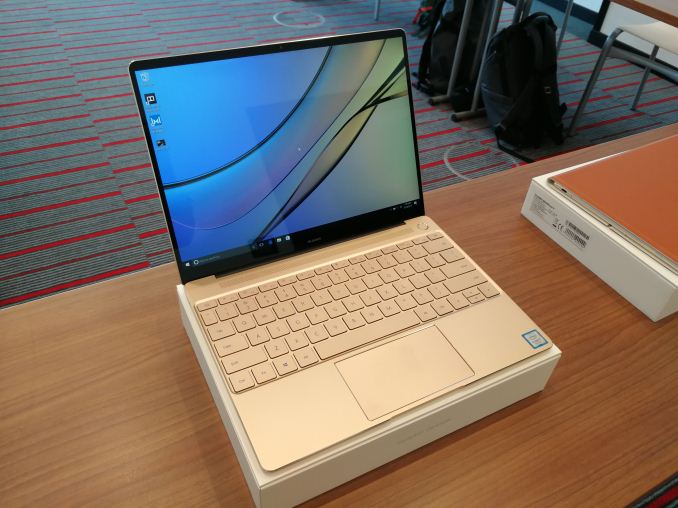
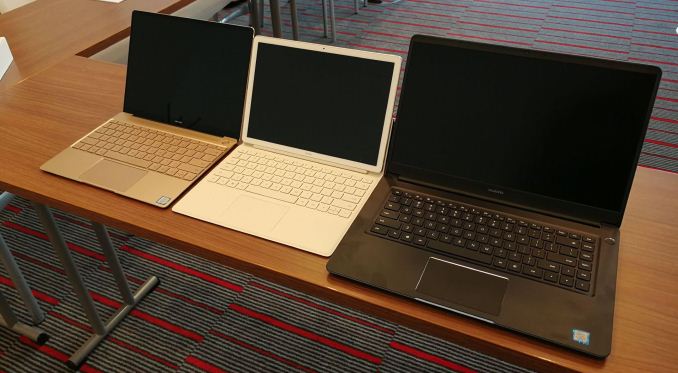
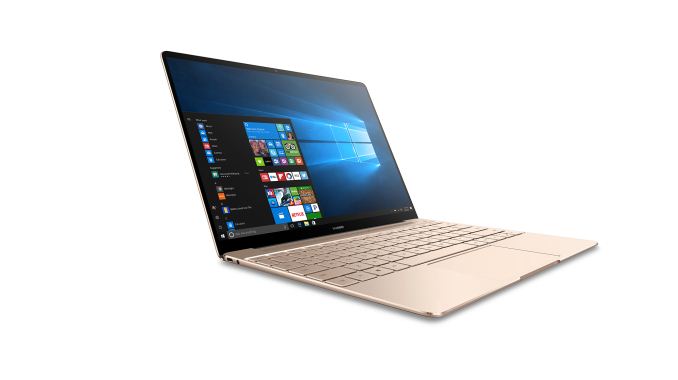

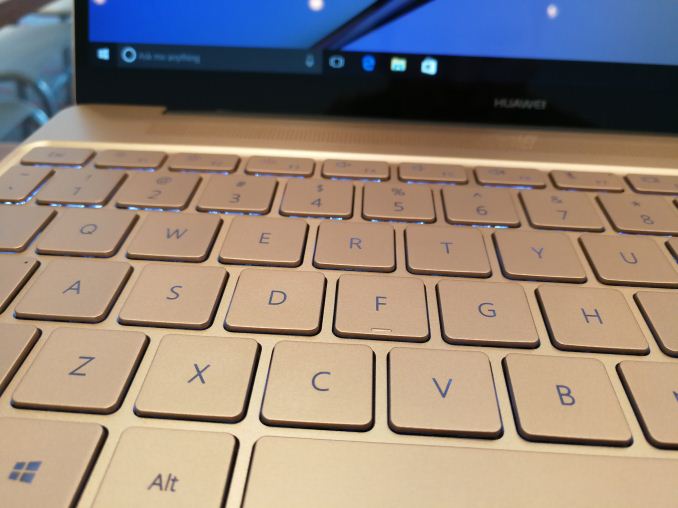


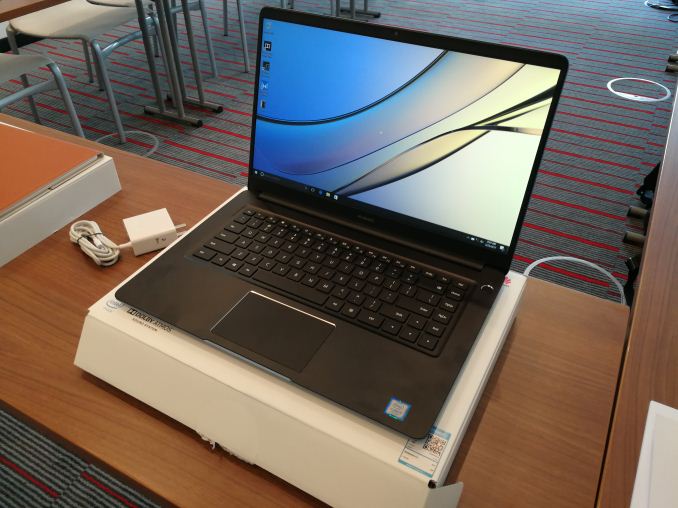
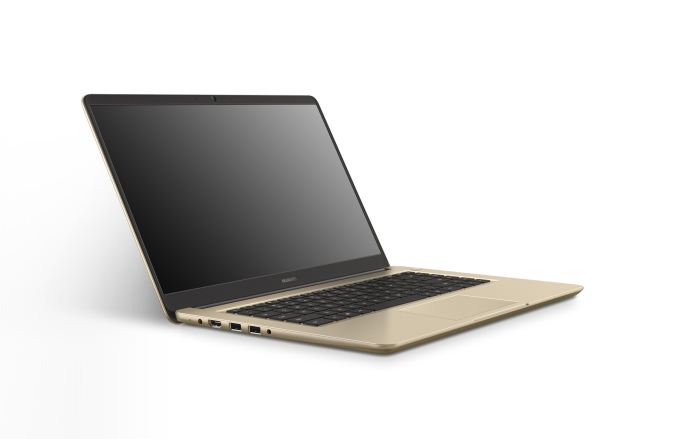

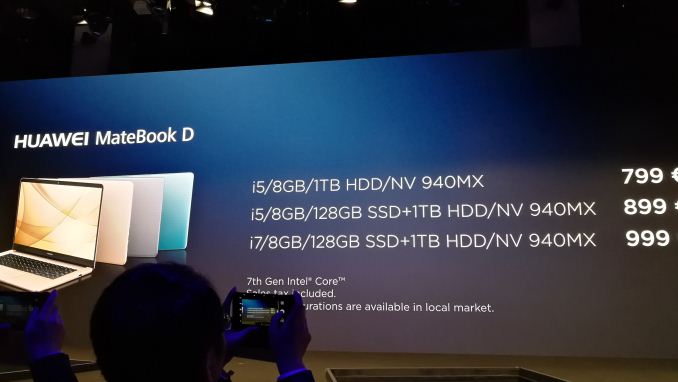

 Quote
Quote

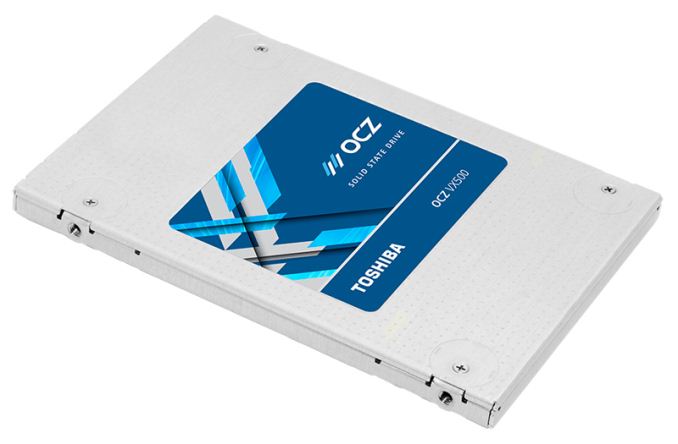
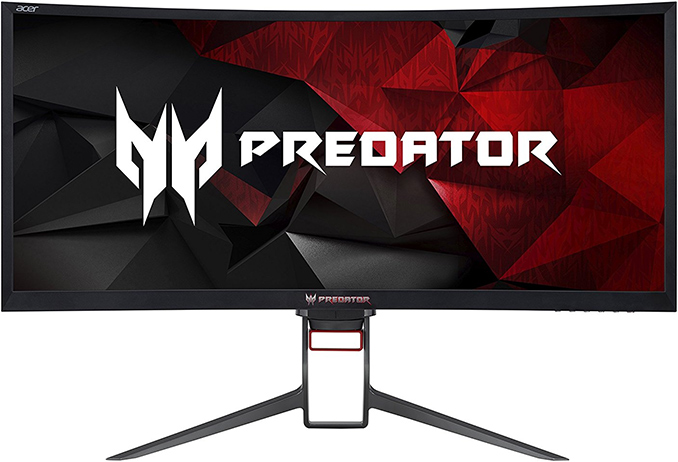
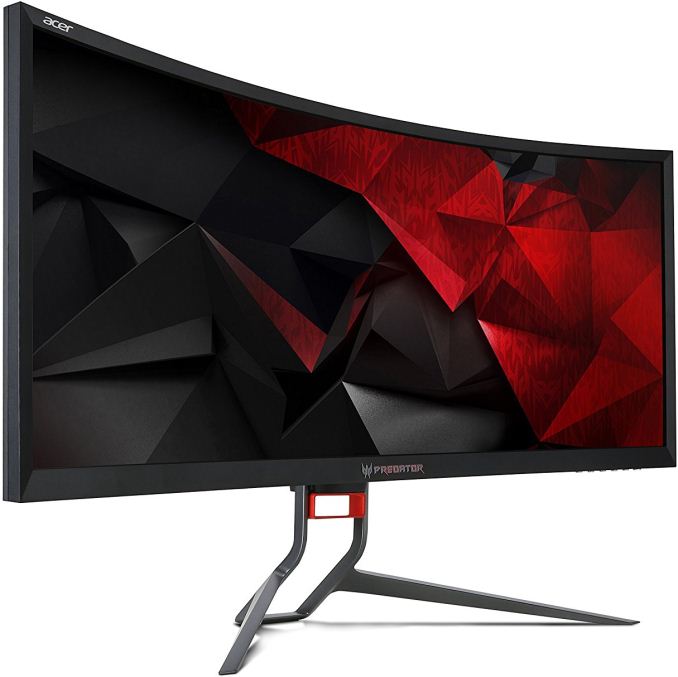


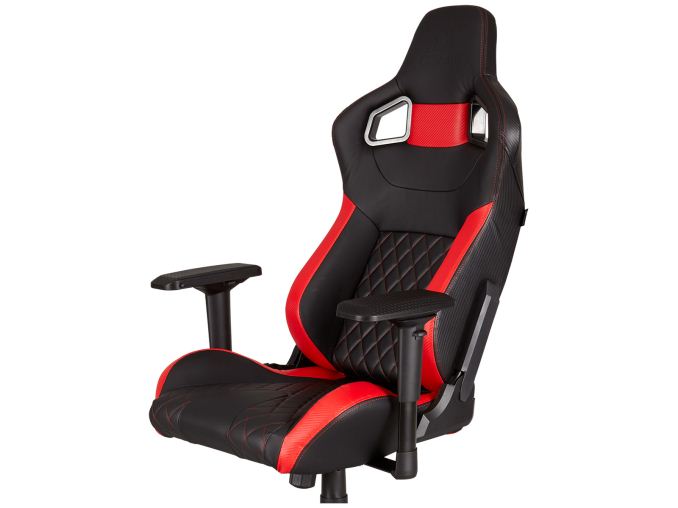
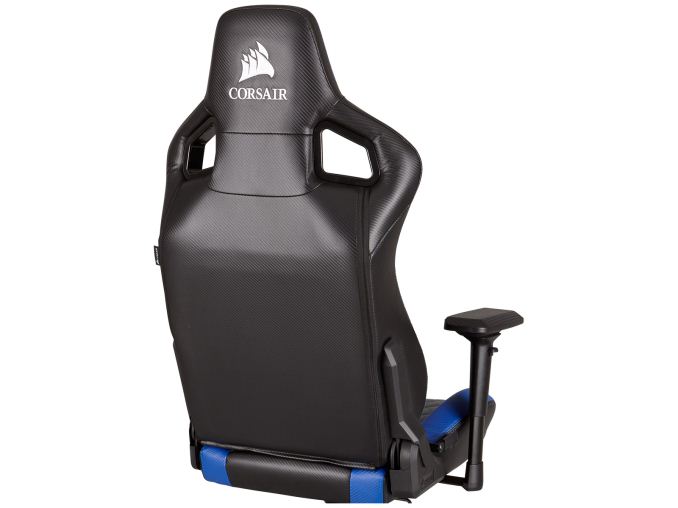
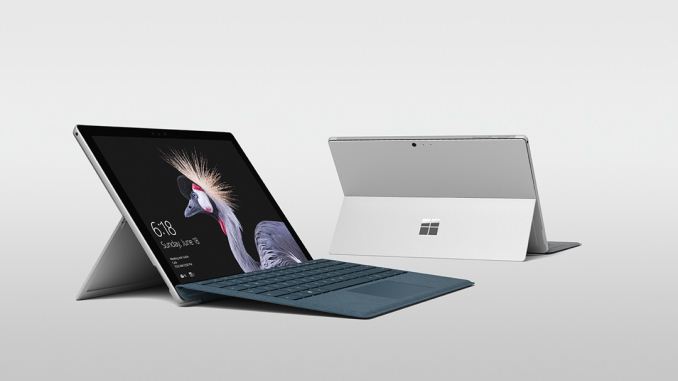
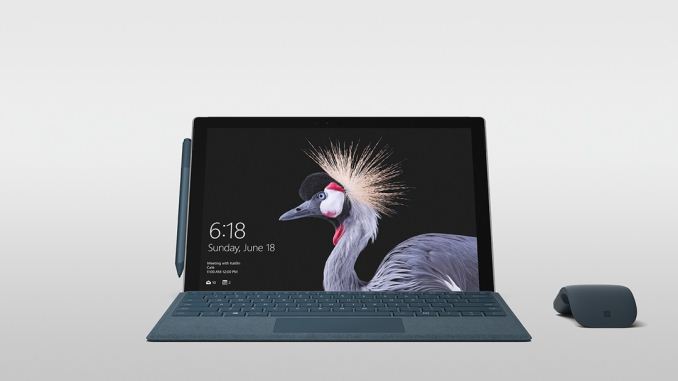
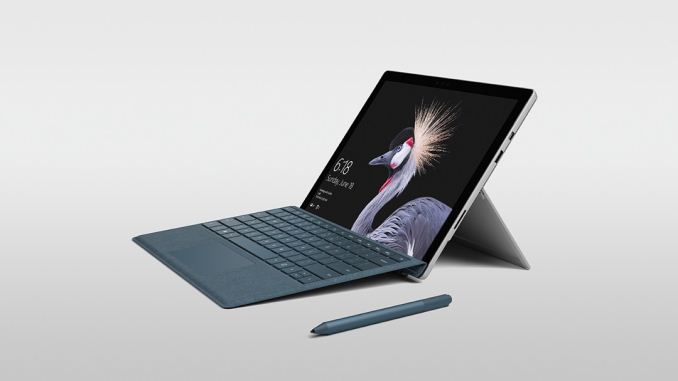
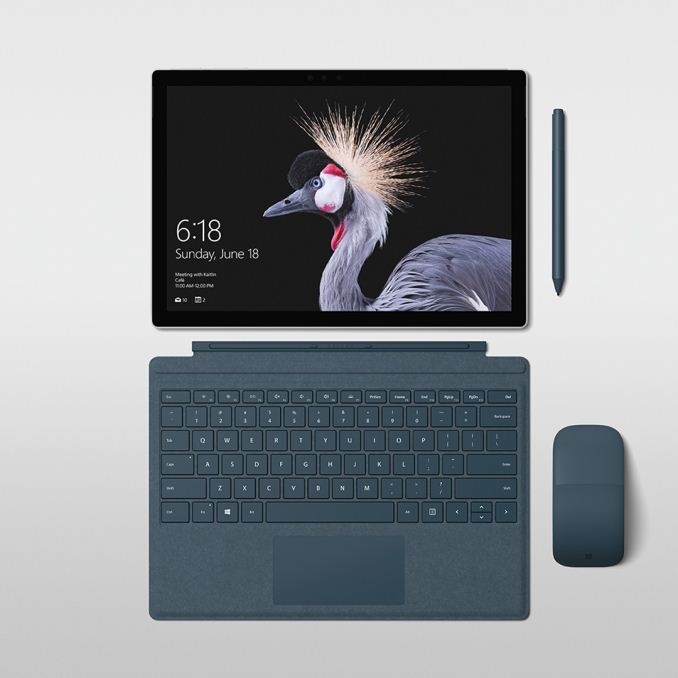

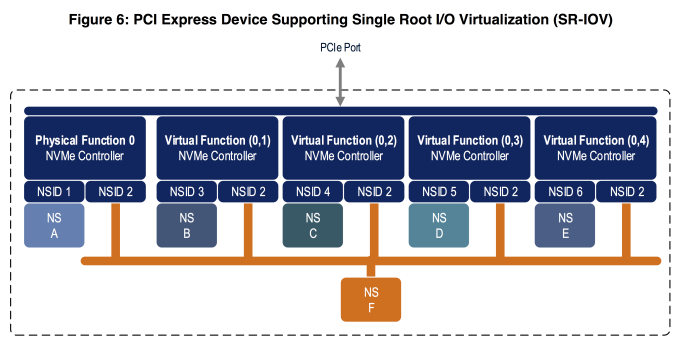

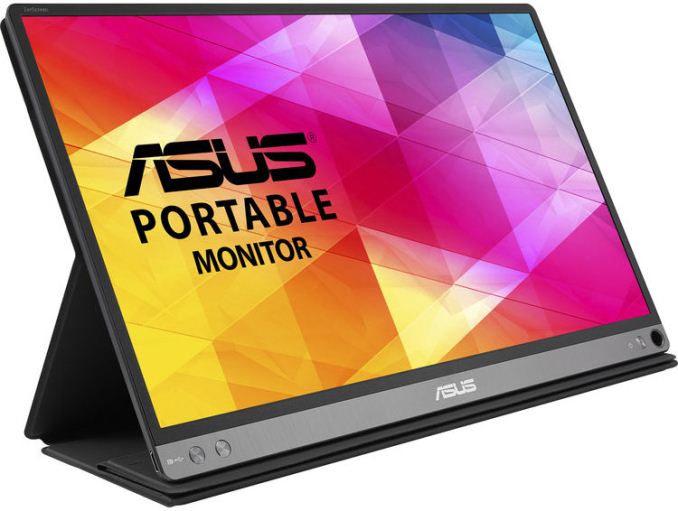
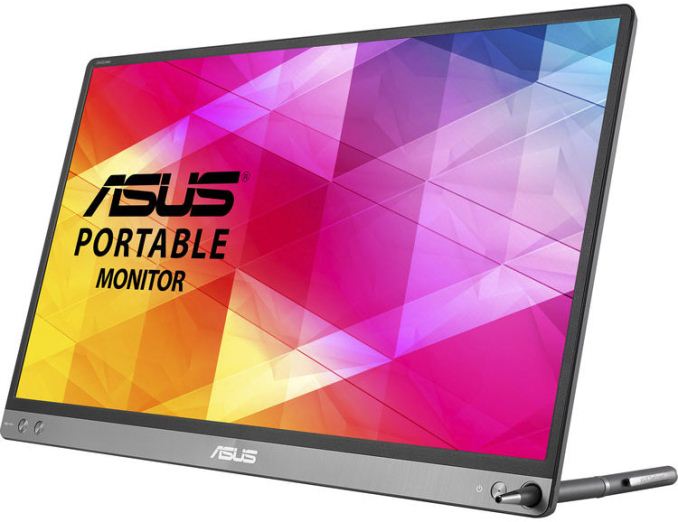

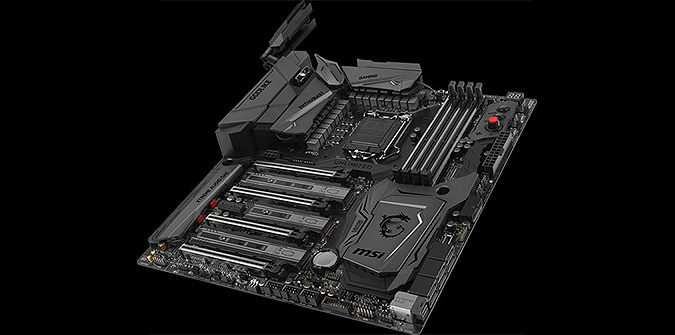
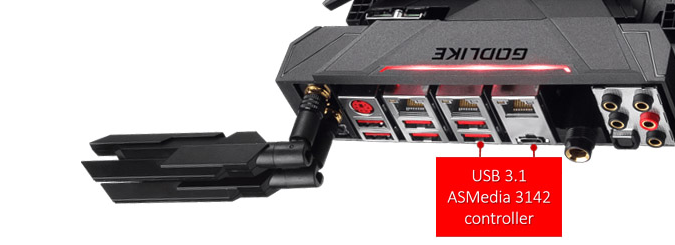
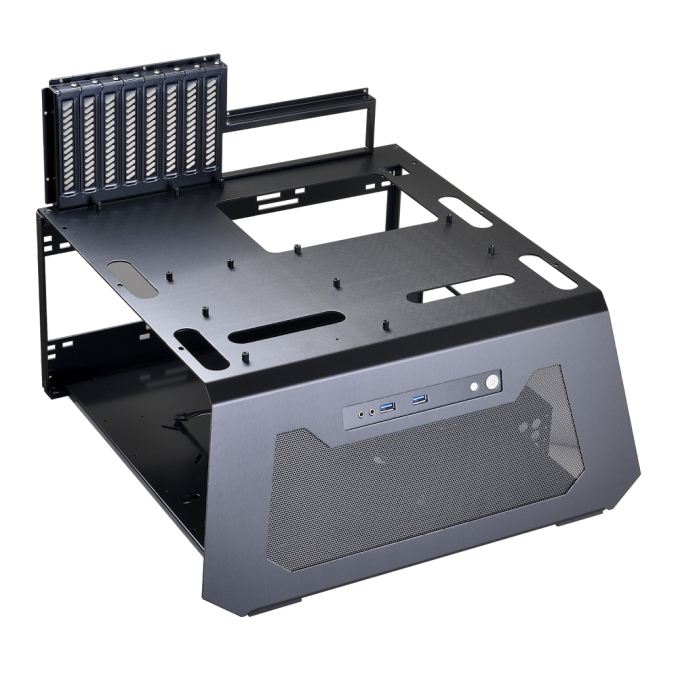
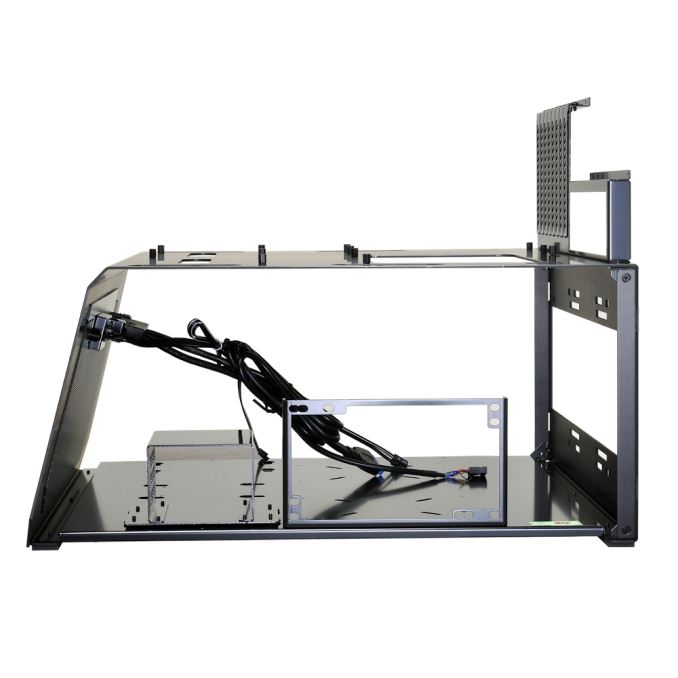
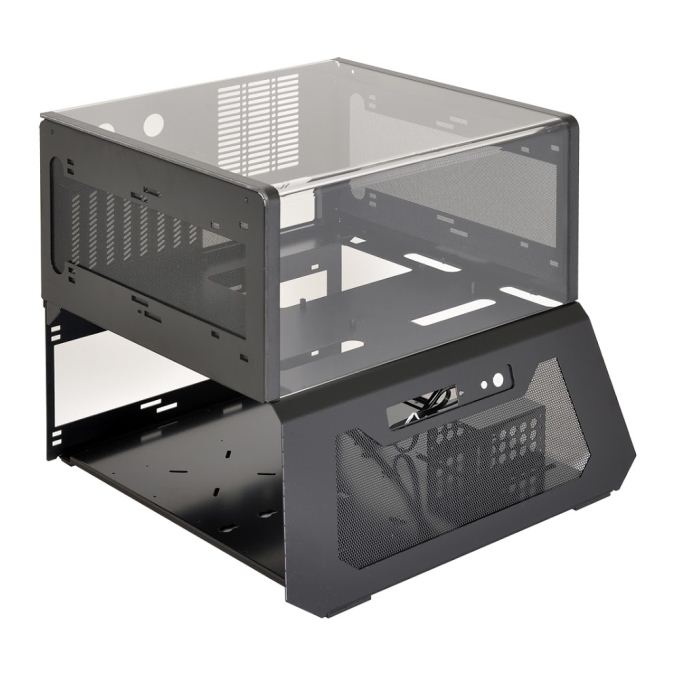
















Bookmarks